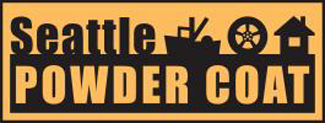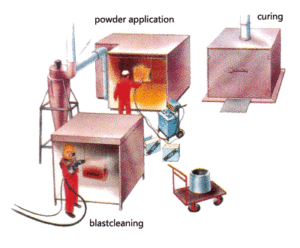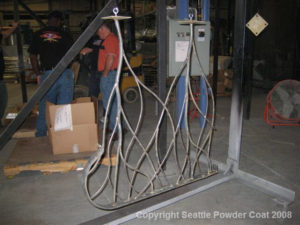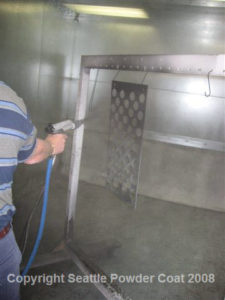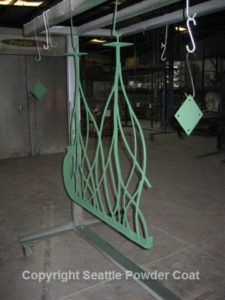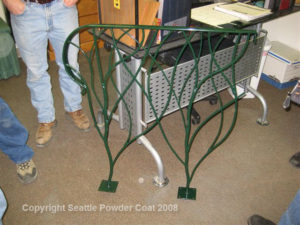The powder coat process is a metal finishing process that can replace traditional wet painting when superior performance is required. Over time powder coating has developed into a common, even preferred process for the manufacturing industry, certain specialty groups such as automotive, racing, and sporting goods, as well as hobbyists and homeowners.
What types of surfaces can be powder coated?
The powder coat process is best suited to all-metal parts, weldments, and assemblies. Best results are obtained when any rust and existing coatings are removed. Plastic, rubber, wood, ceramic, glass, fabric, and similar non-metallics are typically not coated. Similarly, lead soldered parts may not withstand the curing temperature.
Step 1: Cleaning the surfaces
Proper metal pretreatment is essential. The powder coating process often begins with mechanical abrasive (blastcleaning) and/or chemically cleaning the part’s surfaces to optimize it for coating. The parts are then hung on portable racks to ensure that the powder coat can be applied uniformly with no further handling or disturbances.
Step 2: Applying the powder
Powder is applied in a clean containment booth to prevent contamination with dust or powders of other colors. Parts are electrically grounded and the dry powder is then sprayed on using a system which electrically charges the powder particles. The charged powder is attracted by, and attaches to, the metal surfaces.
Step 3: Curing the powder
After the parts are coated with dry powder, the racks they’re hanging on are moved into a curing oven. As the coated parts heat up, the powder gels and flows to produce the characteristic powder coat finish. As thermosetting powder coatings reach their maximum curing temperature, a chemical reaction called crosslinking takes place, bonding the polymer chains and giving the coating its flexible, tough, and abrasion-resistant qualities. At this point the parts can be removed from the oven, cooled in ambient air, and be immediately put in service.
